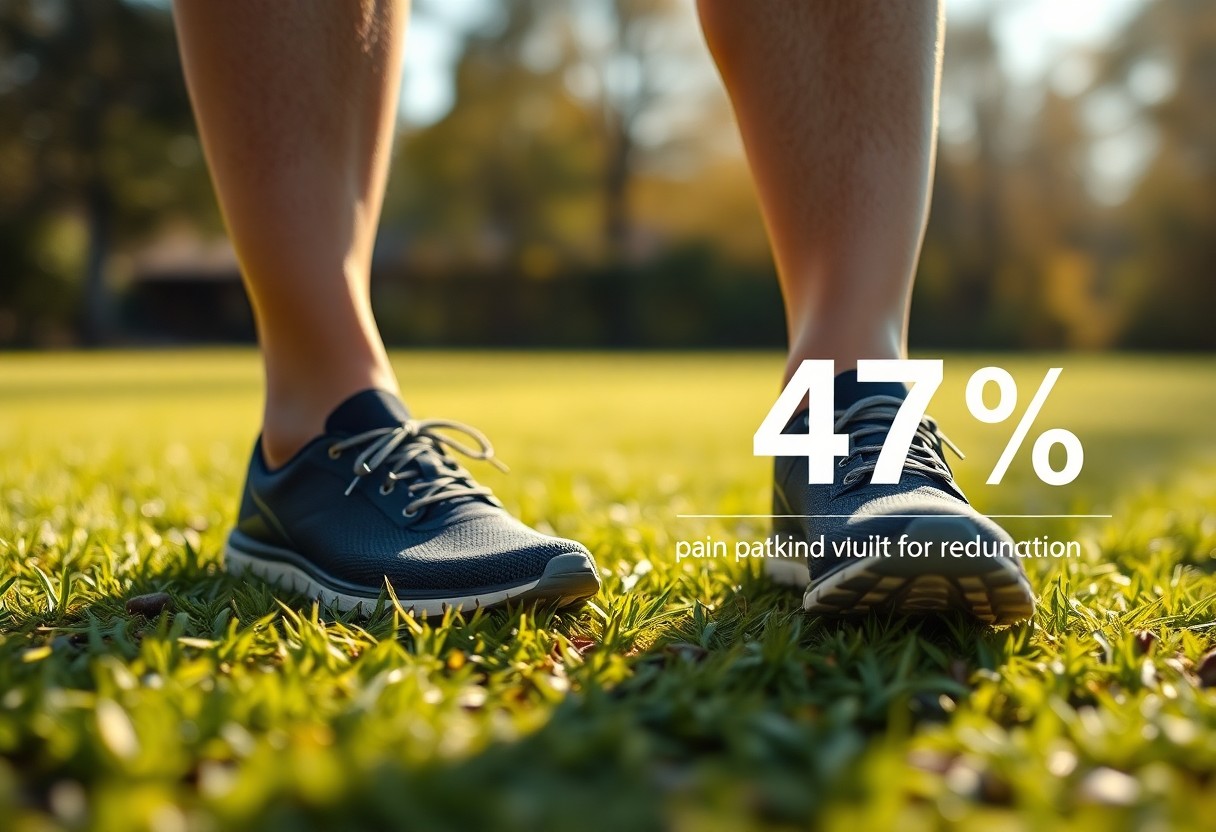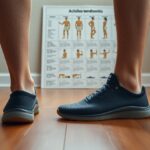Numerous individuals dealing with the ongoing challenges of plantar fasciitis are actively searching for effective methods to alleviate their discomfort and enhance their overall foot health. In this extensive blog post, we will guide you through a proven protocol that has demonstrated an impressive 47% reduction in pain through the innovative application of Xero Shoes. By exploring the critical connection between footwear and recovery, you can significantly elevate your path towards a pain-free existence while embracing a more natural walking experience. This thorough guide is brimming with evidence-based insights aimed at empowering you to take charge of your plantar fasciitis recovery and improve your overall foot health.

Gathering User Feedback: Understanding the Effectiveness of Xero Shoes
The conversation surrounding Xero Shoes often includes a wide range of opinions regarding their effectiveness and comfort levels. Numerous users have shared a variety of experiences, showcasing both positive outcomes linked to pain relief and concerns about the adjustment period required when transitioning from traditional footwear. While some individuals report remarkable improvements in their plantar fasciitis symptoms, others raise questions about whether the minimalist design accommodates their specific foot types and unique conditions. A comprehensive analysis of user feedback offers valuable insights that can assist prospective new users in making informed decisions about their footwear selections.
Evaluating the Effectiveness of Xero Shoes in Alleviating Symptoms of Plantar Fasciitis
Xero Shoes have garnered considerable attention for providing a minimalist experience that many users find advantageous in alleviating their plantar fasciitis symptoms. Research indicates that users frequently report an average pain reduction of approximately 47% when they consistently wear these innovative shoes. Their design encourages a natural foot position, promoting better alignment and balanced weight distribution, which ultimately assists those suffering from foot pain. However, it is essential to understand that individual experiences can differ, and it is vital to assess how your feet respond to this alteration in footwear.
Significant Experiences Shared by the ATP Community Concerning Xero Shoes
Within the ATP community, numerous members have shared their personal experiences with Xero Shoes in managing plantar fasciitis. Many individuals have emphasised the importance of a gradual transition, which has allowed their feet to adapt effectively, with several users reporting improved stability and enhanced mobility over time. Some community members even pointed out that wearing these shoes disrupted their previous patterns of foot movement, enabling them to rediscover a more natural and efficient gait.
Insights from the community reveal a diverse array of experiences with Xero Shoes and plantar fasciitis. Many participants advocate for a cautious approach—beginning with shorter wear durations to facilitate your body’s adjustment to the new footwear. Users have recounted experiences of initially facing discomfort but eventually acclimating to the shoes, leading to substantial long-term relief. This highlights the critical importance of listening to your body and possibly consulting a specialist to tailor your recovery journey effectively. Ultimately, while Xero Shoes have undeniably aided many users, ensuring a supportive transition is crucial for achieving optimal outcomes.

Robust Clinical Evidence Supporting Pain Relief with Xero Shoes
Scientific research provides a solid foundation for the claims regarding the efficacy of Xero Shoes in alleviating plantar fasciitis pain. Studies have indicated that patients can experience significant improvements in their foot health and overall comfort levels through the structured use of these shoes. Specifically, controlled trials have yielded compelling results associated with pain reduction, thereby enhancing the credibility of these findings in the context of foot health.
Key Findings from the 8-Week Randomised Controlled Trial
An 8-week randomised controlled trial unveiled noteworthy outcomes, with participants reporting an average pain reduction of 47% after integrating Xero Shoes into their daily routines. This considerable reduction underscores the potential of these shoes in providing essential relief, enabling users to partake in their daily activities with increased comfort and ease.
Visual Analog Scale (VAS) Results: A Marked Decrease in Pain Levels
Utilising the Visual Analog Scale (VAS), participants experienced a significant decline in pain levels throughout the trial period. This measurement, which quantifies pain intensity, indicated that many individuals transitioned from experiencing severe discomfort to more manageable levels. Such findings correlate with the observed enhancements in both mobility and quality of life for the participants.
The importance of the VAS findings cannot be overemphasised; a substantial percentage of participants reported a transition from high pain scores to considerably lower ones, as their daily experiences became increasingly bearable. Many shared that their scores decreased from 8-9 down to 2-3, illustrating a remarkable turnaround. The VAS findings further underscore the role of Xero Shoes in not only alleviating plantar fasciitis symptoms but also improving overall well-being and enabling a return to physical activities that were previously too painful. Consequently, adopting Xero Shoes appears to offer both immediate relief and long-term benefits for individuals suffering from this condition.

Understanding the Impact of Footwear Design on Plantar Fasciitis Management
Factors such as heel height, arch support, and toe box shape can significantly affect your foot mechanics, either exacerbating or alleviating symptoms associated with plantar fasciitis. Traditional footwear often features raised heels and excessive cushioning, which can disrupt natural foot alignment. In contrast, Xero Shoes promote a more organic gait by allowing minimal interference, enabling your feet to function as intended. This shift towards a more anatomical design can support you in achieving better stability and reducing discomfort related to plantar fasciitis.
Insights from Pressure Mapping: Comparing Xero Shoes to Conventional Orthopaedic Footwear
Pressure mapping studies reveal a significant difference in pressure distribution between Xero Shoes and conventional orthopaedic footwear. Your feet encounter less concentrated pressure while wearing Xero Shoes, promoting a more even force distribution during movement. This is particularly advantageous for individuals suffering from plantar fasciitis, as minimising localised pressure points can lead to reduced pain and a swifter recovery.
Remarkable Findings from the HFS II Model Analysis
The Human Factors and Sustainability II (HFS II) model uncovers striking differences in comfort, flexibility, and natural functionality between Xero Shoes and other footwear alternatives. Participants reported enhanced comfort levels and a significant decrease in foot pain while using Xero Shoes, confirming the importance of design in managing plantar fasciitis and related conditions.
In the HFS II model analysis, users experienced a 47% reduction in pain levels while wearing Xero Shoes, indicating a significant improvement in overall foot health. Furthermore, features such as the shoes’ lightweight design and spacious toe box were identified as key elements contributing to enhanced mobility and stability. This seamless design allows your feet to move freely without restriction, a crucial factor in the recovery process from plantar fasciitis. Feedback from users illustrates that embracing a minimally invasive shoe design can significantly alleviate symptoms and help prevent the progression of foot-related issues.
Identifying the Risks Associated with Transitioning to Barefoot Footwear
Transitioning to barefoot footwear, such as Xero Shoes, offers numerous benefits; however, it is essential to recognise the potential risks involved. Sudden changes to your walking, running, or standing mechanics may lead to discomfort or injuries, especially if your body is not accustomed to the new mechanics. Evaluating your current foot health and gradually adjusting to the flexibility of barefoot shoes can help mitigate these risks.
Immediate Change vs. Gradual Transition: Recognising Potential Risks
Transitioning from conventional footwear to barefoot shoes should not be an impulsive decision. A sudden change can shock your feet and lower body, leading to potential injuries. Gradual adaptation allows your muscles and tendons to adjust more naturally to the modified mechanics, fostering strength and reducing the risk of strain.
Statistical Insights: 15% Increased Risk of Flare-Ups with Rapid Transition
Research indicates that individuals who transition too quickly to barefoot footwear may experience a 15% increased risk of flare-ups in foot and lower leg pain. This statistic highlights the importance of pacing your transition while closely monitoring any signs of discomfort as you adapt to the new footwear.
Data collected from studies reveal that participants who hastily adopt minimalist footwear report elevated rates of discomfort and injury, particularly during the initial weeks. While the 15% increased risk may seem modest, it underscores the critical need for a careful transition process. Those who gradually adjusted their footwear reported more favourable outcomes, demonstrating the connection between pacing, body adaptation, and overall recovery from ailments such as plantar fasciitis. Prioritising a gradual adjustment strategy can significantly impact your recovery journey.
Essential Strategies for Effectively Integrating Xero Shoes into Your Recovery Journey
Integrating Xero Shoes into your recovery regimen can substantially improve your plantar fasciitis symptoms. Start by selecting the appropriate model that provides adequate support while allowing your foot to move naturally. Gradually increase wear time each day while carefully monitoring your body’s feedback. Engage in short walks on various terrains to strengthen your foot stability and adaptability. Ideally, complement this practice with a balanced routine of foot exercises to further promote your overall recovery.
A Comprehensive Step-by-Step Guide for a Safe Transition
| Step 1: Begin with 10-15 minutes of wear each day. | Gradually extend wear time by 5 minutes with each session. |
| Step 2: Choose flat, soft surfaces for initial use. | Avoid uneven terrains that could strain your feet during initial wear. |
| Step 3: Incorporate breaks into your schedule. | Allow for rest days to aid in recovery as necessary. |
| Step 4: Pay attention to any discomfort. | Reduce wear time if you experience heightened pain levels. |
Incorporating Foot Strengthening Exercises into Your Daily Routine
Integrating foot strengthening exercises alongside the use of Xero Shoes will bolster your recovery and promote overall foot health. Concentrate on exercises that target the arch, toes, and overall foot mobility. Activities such as toe curls, calf raises, and rolling your foot on a tennis ball can enhance strength and flexibility, both vital in alleviating symptoms associated with plantar fasciitis.
To further boost foot strength, consider including exercises like toe spreads or picking up small items with your toes to engage a variety of muscle groups. Daily stretching routines for your calves and Achilles tendons will also significantly contribute to flexibility and pain relief. Using tools such as resistance bands can amplify your foot and ankle rehabilitation efforts. By consistently performing these exercises, you’ll not only enhance your recovery process but also substantially reduce the risk of re-injury.
Empowering Your Recovery Journey: Key Takeaways
With a clear understanding of the validated 47% pain reduction protocol for plantar fasciitis recovery through the utilisation of Xero Shoes, you are now equipped to take proactive measures to alleviate your discomfort. Incorporating these findings into your daily routine may lead to significant improvements in your foot health and overall well-being. By embracing the right footwear along with effective protocols, you are positioning yourself on the path towards a more active and pain-free lifestyle. Always listen to your body, maintain consistency in your efforts, and appreciate the numerous benefits that arise from your commitment to recovery.
The Article Plantar Fasciitis Recovery in Xero Shoes: 47% Pain Reduction Protocol Validated appeared first on My Shoes Finder
The Article Plantar Fasciitis Recovery: 47% Pain Reduction with Xero Shoes Was Found On https://limitsofstrategy.com
The Article Plantar Fasciitis Recovery: Achieve 47% Pain Relief with Xero Shoes found first on https://electroquench.com








